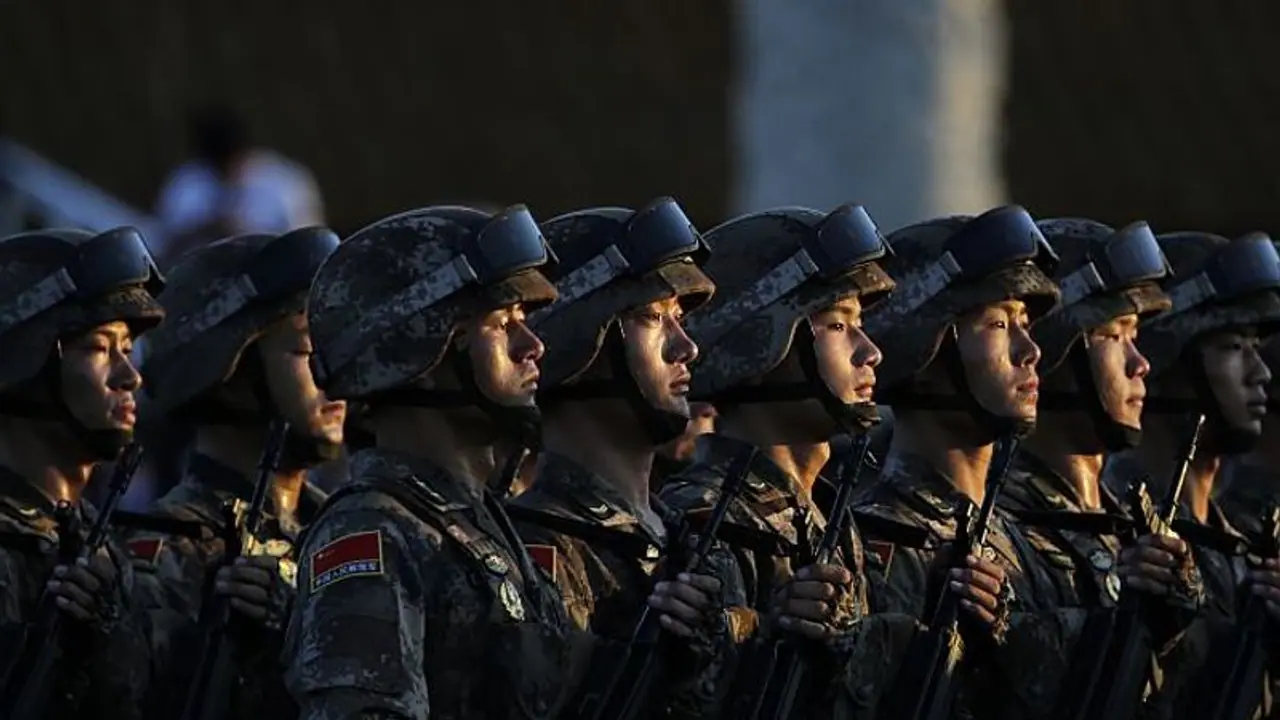Chinese border incursions into India are strategically planned, part of expansionist strategy' to gain permanent control of disputed border areas, says study conducted by international experts
A study on Chinese border incursions into India by a team of international experts has concluded that Chinese infringements into the Aksai Chin region are not random or independent but part of a coordinated and strategically planned expansionist strategy aimed at gaining permanent control of the disputed border area.

The study by the Technical University of Delft in the Netherlands and the Netherlands Defence Academy titled 'Rising Tension in the Himalayas: a Geospatial Analysis of Chinese Border Incursions into India' used an original dataset that covers the past 15 years to present a geospatial analysis of the incursions.
Also Read: Chinese security agency purchases villa worth $65 million in Hong Kong
According to the study released on Thursday, conflict is centred around the major contested areas of Aksai Chin and Arunachal Pradesh. The study concluded that building on insights from the game theory, the Chinese incursions in the west are strategically planned and targetted at permanent control of the contested areas,
Incursion is defined as any movement of Chinese troops across the border by foot or in vehicles into areas that are internationally accepted as India's territory. The experts then plotted each location on a map to identify 13 hotspots where incursions happen most frequently.
Through a 15-year dataset, the researchers noted an average of 7.8 incursions per year, even though the Indian government's estimates are much higher.
The 3,488-km-long Line of Actual Control has been a bone of contention between India and China, with the latter claiming Arunachal Pradesh as part of southern Tibet. Aksai Chin in Ladakh is currently under Chinese occupation.
According to 2019 Indian government data, the Chinese Army transgressed into Indian territory 1,025 times between 2016 and 2018. In November 2019, then Minister of State for Defence Shripad Naik informed Lok Sabha that there had been 273 transgressions by the Chinese Army in 2016, which rose to 426 in 2017. In 2018, the number of such cases reported was 326.
In a statement, Northwestern University said that the authors compiled information about Chinese incursions into India from 2006 to 2020 using game theory and statistical methods to analyse the data and create data sets. They divided the conflict zones into two distinct sectors -- east (the Arunachal Pradesh region) and west/middle (the Aksai Chin region).
Chinese incursions across India's west and central borders are not independent, random incidents that happen by mistake, the release said, adding that conflicts in the east and middle sectors are part of a coordinated expansionist strategy.
Also Read: India is buying over 2000 drones: There's a 'Himalayan' advantage to gain
VS Subrahmanian of Northwestern University's Department of Computer Science -- the study's senior author -- said that it was statistically apparent from the assessment of the number of incursions in the west and middle sectors over the course of time that they were not random and seemed more like a coordinated effort.
Subrahmanian said Aksai Chin is a critical region for China that it wants to develop. Considering that Aksai Chin is a vital passageway between China and the Chinese autonomous regions of Tibet and Xinjiang, it is not surprising that there are more incursions in the western sector.
According to the study, the rising tension between the world's most populous countries poses risks to the world economy and global security. Militarisation of the region has a negative ecological impact, it said, adding that India's participation in the Quad -- the security dialogue involving India, the United States, Japan and Australia -- may trigger Chinese activity along the India border. Meanwhile, China is involved in cooperative activities with Pakistan and is ready to step into the void left behind after the retreat of the western powers in Afghanistan.
The study noted that there are no signs that the state of high alertness, in which India and China are currently, will improve soon.
Also Read: Exposed! How China planted Huawei in Mauritius to spy on internet and India
